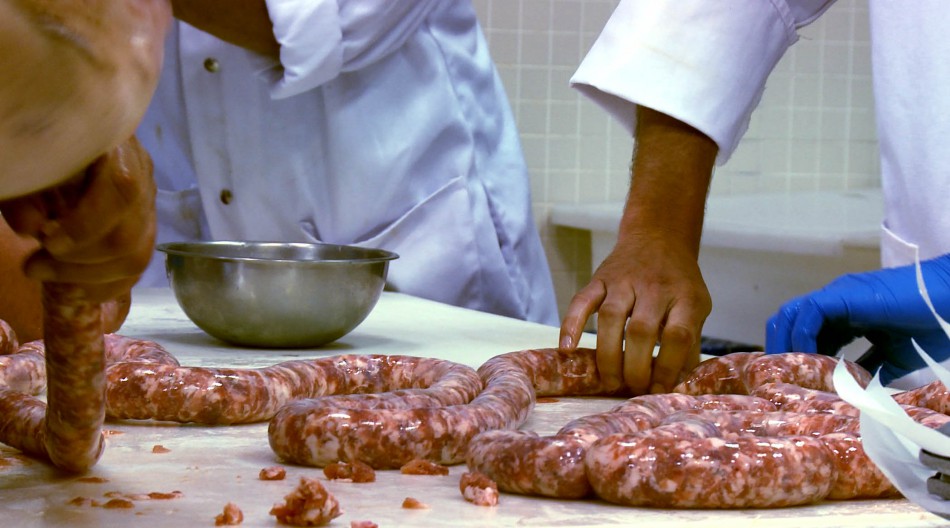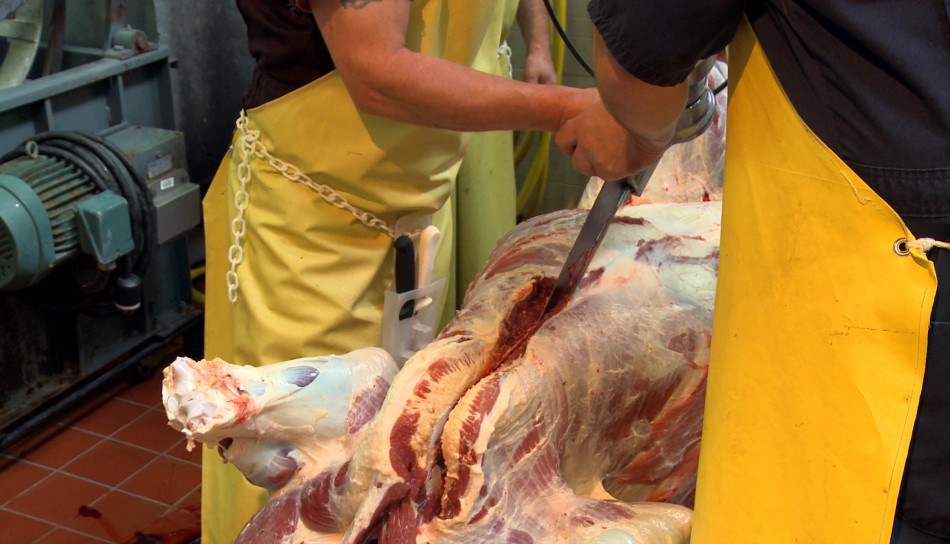Humane Slaughter and Food Quality
 In regard to meat texture, an ineffective application of electrocution with pigs can cause meat that is soft with mushy spots. Lastly, the appearance of meat can be affected when an improperly slaughtered animal feels pain and thrashes around, bruising themselves, causing meat to have unseemly red blotches (blood spots).
In regard to meat texture, an ineffective application of electrocution with pigs can cause meat that is soft with mushy spots. Lastly, the appearance of meat can be affected when an improperly slaughtered animal feels pain and thrashes around, bruising themselves, causing meat to have unseemly red blotches (blood spots).
 To learn more about these issues, we suggest the following resources:
To learn more about these issues, we suggest the following resources:
Belk, Keith E. John A. Scanga, Gary C. Smith, and Temple Grandin. “The Relationship Between Good Handling / Stunning and Meat Quality in Beef, Pork, and Lamb,” Animal Handling And Stunning Conference, American Meat Institute Foundation, February 21-22, 2002, link to article
Freund, Daily. “How Animal Welfare Leads to Better Meat: A Lesson from Spain,” The Atlantic, 25 August 2011, link to article
